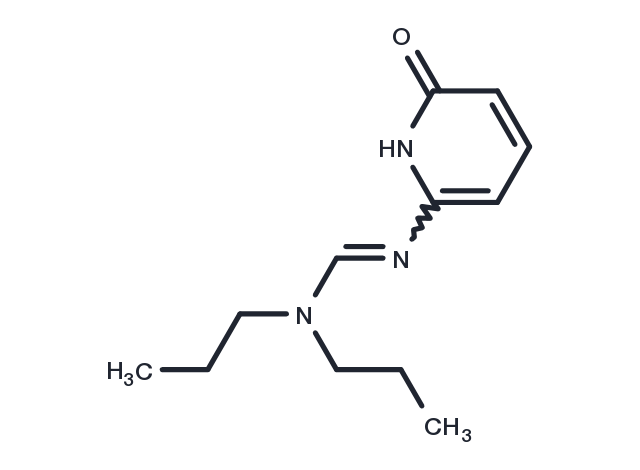Powder: -20°C for 3 years | In solvent: -80°C for 1 year


CGP-28014 is an inhibitor of catechol-O-methyltransferase. CGP-28014 increases the renal excretion of both dopamine and dihydroxyphenylacetic acid (DOPAC) but does not affect renal sodium handling indicating a different mechanism of action. CGP-28014 significantly reduced the levels of homovanillic acid (HVA), but did not modify DA and 3,4-dihydroxyphenylacetic acid (DOPAC).

| Pack Size | Availability | Price/USD | Quantity |
|---|---|---|---|
| 25 mg | 6-8 weeks | $ 1,520.00 | |
| 50 mg | 6-8 weeks | $ 1,980.00 | |
| 100 mg | 6-8 weeks | $ 2,500.00 |
| Description | CGP-28014 is an inhibitor of catechol-O-methyltransferase. CGP-28014 increases the renal excretion of both dopamine and dihydroxyphenylacetic acid (DOPAC) but does not affect renal sodium handling indicating a different mechanism of action. CGP-28014 significantly reduced the levels of homovanillic acid (HVA), but did not modify DA and 3,4-dihydroxyphenylacetic acid (DOPAC). |
| Molecular Weight | 221.3 |
| Formula | C12H19N3O |
| CAS No. | 111757-17-6 |
Powder: -20°C for 3 years | In solvent: -80°C for 1 year
You can also refer to dose conversion for different animals. More
bottom
Please see Inhibitor Handling Instructions for more frequently ask questions. Topics include: how to prepare stock solutions, how to store products, and cautions on cell-based assays & animal experiments, etc.
CGP-28014 111757-17-6 CGP 28014 CGP28014 inhibitor inhibit
